Search Result
Results for "
A2780
" in MedChemExpress (MCE) Product Catalog:
| Cat. No. |
Product Name |
Target |
Research Areas |
Chemical Structure |
-
- HY-130606
-
|
|
NAMPT
Cytochrome P450
|
Cancer
|
|
Nampt-IN-5 is a potent nicotinamide phosphoribosyltransferase (NAMPT) inhibitor. Nampt-IN-5 also inhibits CYP3A4 activity and has cellular IC50s of 0.7 nM and 3.9 nM against A2780 and COR-L23, respectively .
|
-
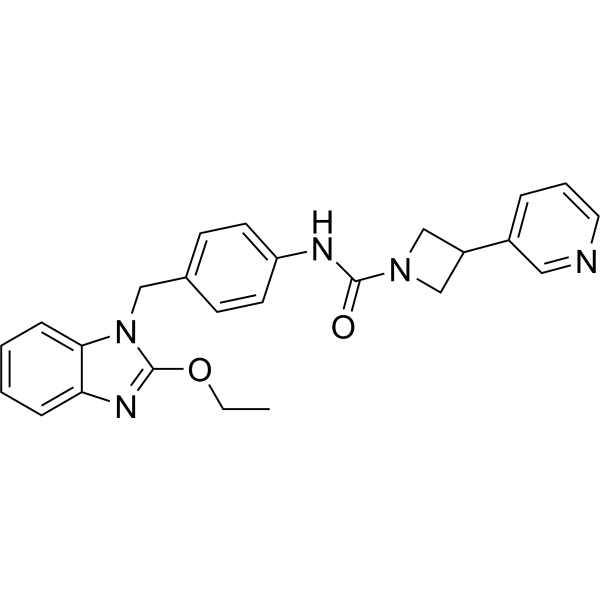
-
- HY-N10846
-
|
|
Others
|
Others
|
|
Neotriptonoterpene, a compound isolated from T. regelii, shows weak cytotoxic activity against A2780, HepG2 and MCF-7 cells with IC50 values of 65.80, 35.45 and 64.80 µM respectively .
|
-
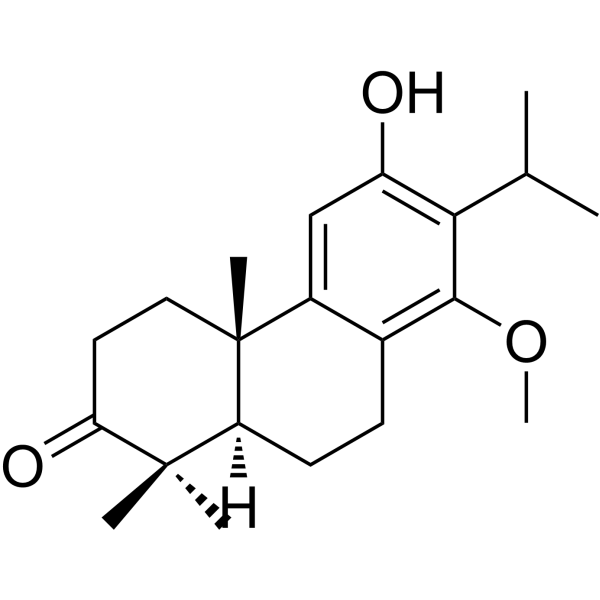
-
- HY-N9892
-
|
|
Sirtuin
|
Others
|
|
Guttiferone G inhibits recombinant human SIRT1 and SIRT2 (IC50: 9 and 22 μM, respectively). Guttiferone G is weakly cytotoxic in A2780 human ovarian cell line (IC50: 8.0 μg/mL). Guttiferone G can be isolated from Garcinia macrophylla .
|
-
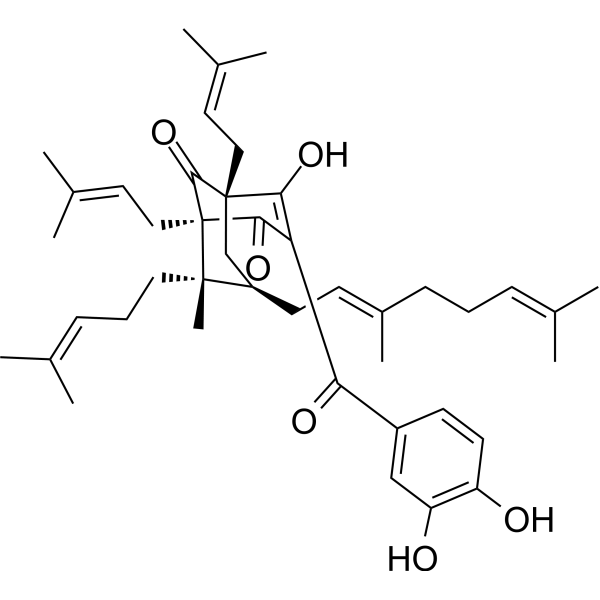
-
- HY-N2863
-
|
|
Others
|
Cancer
|
|
Goniothalenol is a styryl lactone that can be isolated from Goniothalamus griffithii. Goniothalenol exhibits cytatoxic activity against A2780, HCT-8, KB and MCF-7 cell lines .
|
-
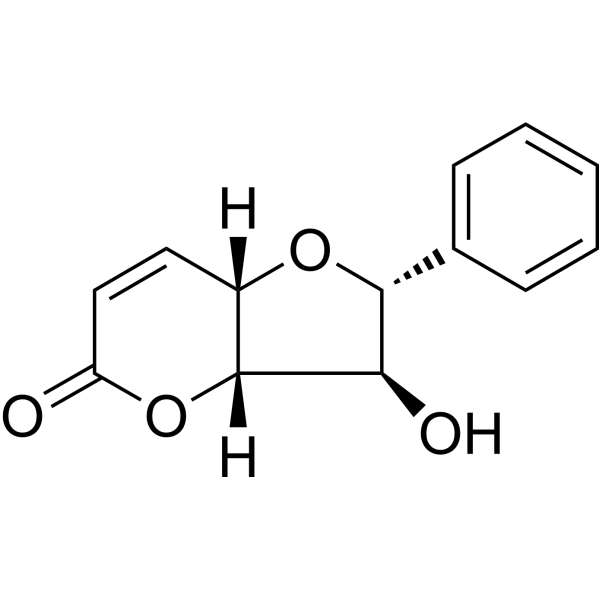
-
- HY-144337
-
|
|
DNA Alkylator/Crosslinker
|
Cancer
|
|
DNA crosslinker 4 (dihydrochloride) is a potent DNA minor groove binder. DNA crosslinker 4 (dihydrochloride) has certain inhibitory activity against cancer cells NCI-H460, A2780 and MCF-7. DNA crosslinker 4 (dihydrochloride) can be used for researching anticancer .
|
-
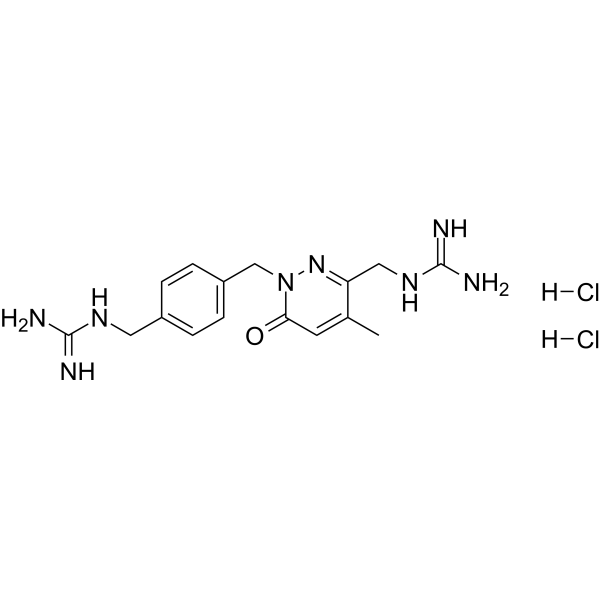
-
- HY-147193A
-
|
|
NAMPT
|
Cancer
|
|
Nampt-IN-10 trihydrochloride (compound 4) is a Nicotinamide Phosphoribosyltransferase (NAMPT) inhibitor. Nampt-IN-10 trihydrochloride shows cellular potency to A2780 and CORL23 cell lines with IC50 values of 5 and 19 nM, respectively. Nampt-IN-10 trihydrochloride can be used as a novel non-antimitotic payload for antibody-drug conjugate (ADC) .
|
-
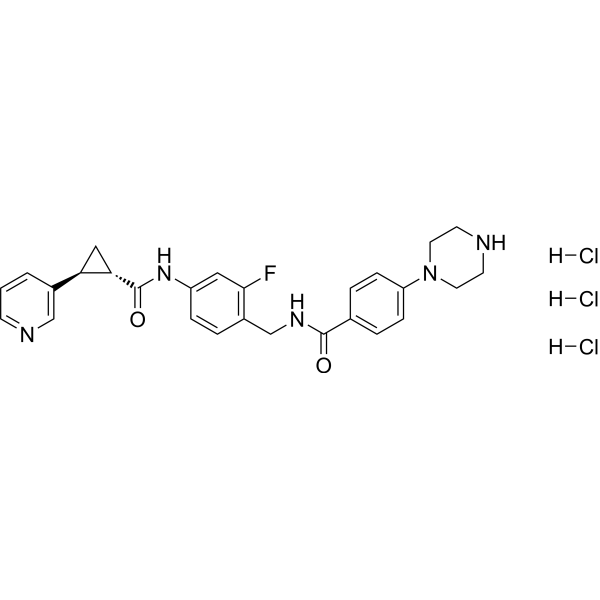
-
- HY-144335
-
|
|
DNA Alkylator/Crosslinker
|
Cancer
|
|
DNA crosslinker 2 (dihydrochloride) is a potent DNA minor groove binder with DNA binding affinity (ΔTm) of 1.2 °C. DNA crosslinker 2 (dihydrochloride) has certain inhibitory activity against cancer cells NCI-H460, A2780 and MCF-7. DNA crosslinker 2 (dihydrochloride) can be used for researching anticancer .
|
-
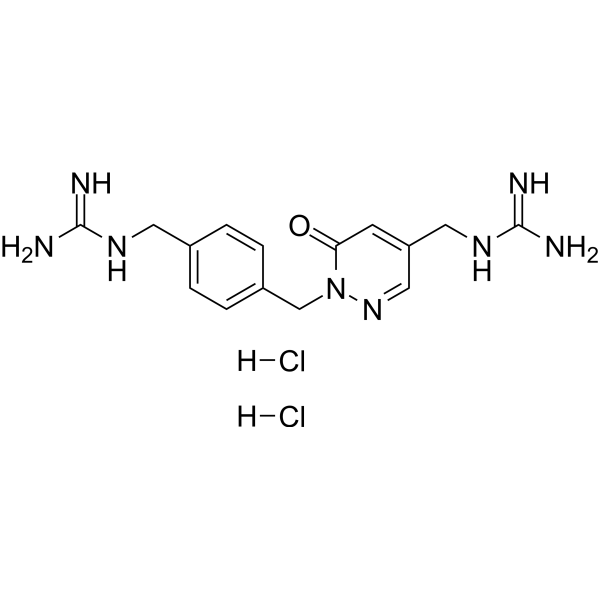
-
- HY-147193
-
|
|
NAMPT
|
Cancer
|
|
Nampt-IN-10 TFA (compound 4) is a Nicotinamide Phosphoribosyltransferase (NAMPT) inhibitor. Nampt-IN-10 TFA shows cellular potency to A2780 and CORL23 cells lines with IC50s of 5 and 19 nM, respectively. Nampt-IN-10 TFA can be used as a novel non-antimitotic payload for ADCs .
|
-
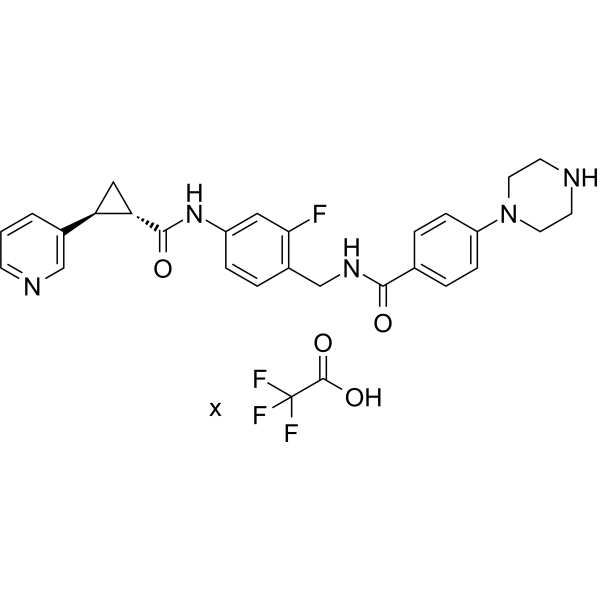
-
- HY-P99925
-
|
REGN421
|
Notch
|
Metabolic Disease
Cancer
|
|
Enoticumab (REGN421, SAR153192) is an IgG1κ antibody targeting human Dll4. DLL4 is a ligand of the Notch signaling pathway and regulates fatty acid uptake through non-transcriptional regulation of macropinocytosis-dependent long-chain fatty acid uptake. Specific in vivo activity of Enoticumab in an ovarian xenograft model. EGN421 (2.5 mg/kg once weekly) resulted in 86% and 83% tumor growth inhibition in mouse subcutaneous TOV-112D or intraperitoneal A2780 human tumor xenograft models, respectively .
|
-

-
- HY-141861
-
|
|
Others
|
Cancer
|
|
Anticancer agent 17 displays potent anticancer activities against HeLa and A2780 cells with IC50 values of 0.19 μM and 0.09 μM, respectively.
|
-

-
- HY-N7825
-
|
|
Others
|
Cancer
|
|
Gomisin L1 is a lignan, shows inhibitory effect on cell viability of A2780 and Ishikawa cells, with IC50s of 39.06 μM and 74.16 μM, respectively .
|
-
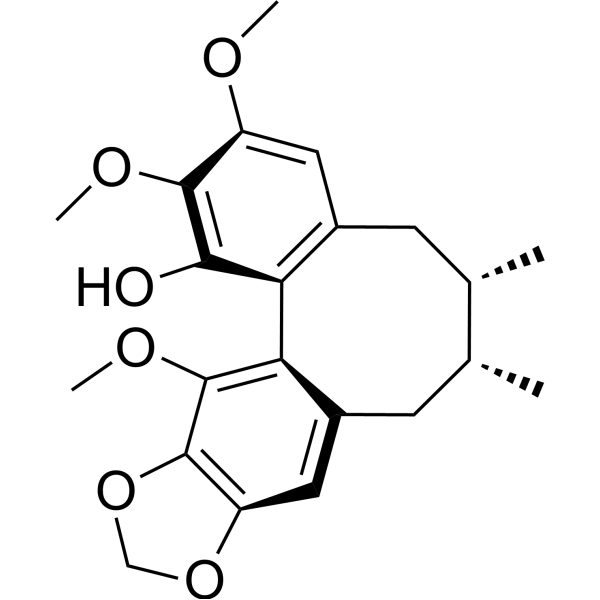
-
- HY-146540
-
|
|
HIF/HIF Prolyl-Hydroxylase
Apoptosis
MDM-2/p53
|
Cancer
|
|
GEM-5 is a gemcitabine-based conjugate containing a HIF-1α inhibitor (YC-1) (IC50=30 nM). GEM-5 can significantly down-regulate the expression of HIF-1α and up-regulate the expression of tumor suppressor p53. GEM-5 induces the apoptosis of A2780 cells and inhibits tumor growth .
|
-
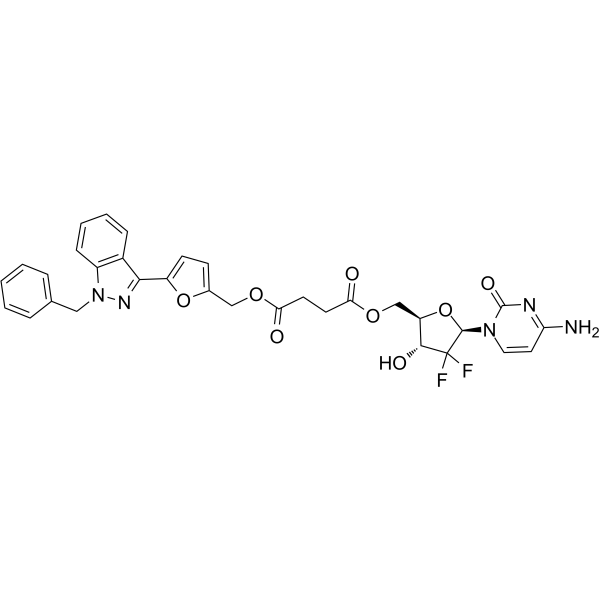
-
- HY-155506
-
|
|
NAMPT
|
Cancer
|
|
NAMPT degrader-3 (compound C5) is a NAMPT degrader, depending on VHL- and proteasome manner. NAMPT degrader-3 displays cytotoxicity and inhibits A2780 cells proliferation .
|
-
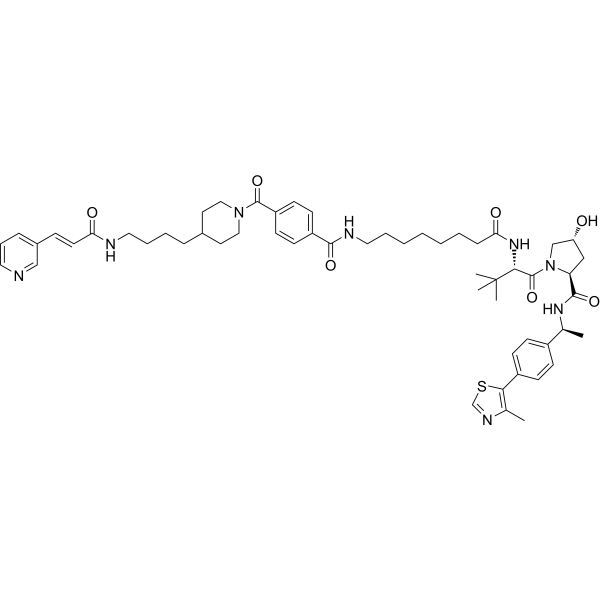
-
- HY-143339
-
|
|
Epigenetic Reader Domain
Histone Acetyltransferase
|
Cancer
|
|
CBP/p300-IN-15 (compound 13a) is a potent p300/CBP inhibitor, with IC50 values of 2.50 and 28.0 nM, respectively. CBP/p300-IN-15 shows good activity against OVCAR-3 and A2780 cell line, with EC50 values of 0.865 and 2.71 μM, respectively. CBP/p300-IN-15 can be used for ovarian cancer research .
|
-
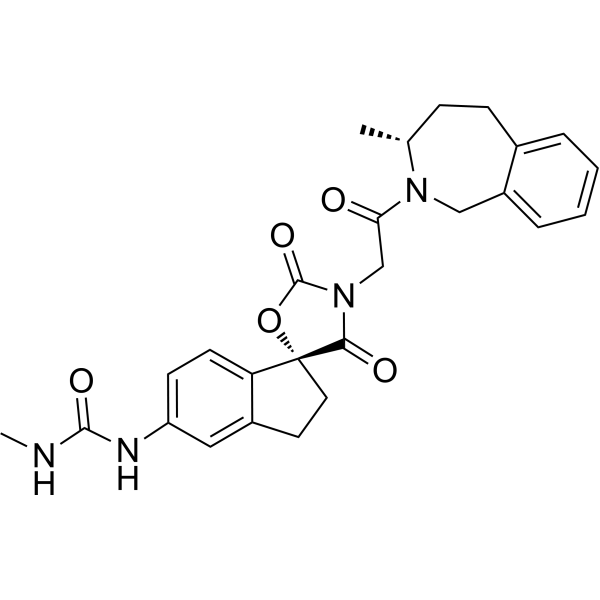
-
- HY-10226
-
|
R306465
|
Apoptosis
HDAC
|
Cancer
|
|
JNJ-16241199 is an orally active, selective hydroxamate-based histone deacetylase (HDAC) inhibitor, with the IC50 of 3.3 nM and 23 nM for HDAC1 and HDAC8, respectively. JNJ-16241199 induces histone 3 acetylation and strongly increases the expression of p21 waf1, cip1 in A2780 ovarian carcinoma cells. JNJ-16241199 induces cell apoptosis and shows anticancer activity in a broad spectrum of human malignancies. JNJ-16241199 can be used for cancer study .
|
-
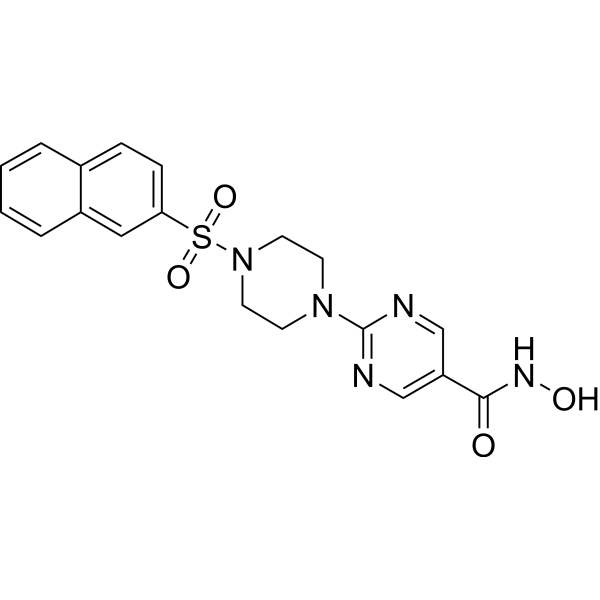
-
- HY-N9067
-
|
|
Others
|
Cancer
|
|
Sanggenofuran B is 2-arylbenzofuran with anti-cancer activity. Sanggenofuran B inhibits A2780 cell line with an IC50 value of 57.1 μM. Sanggenofuran B can be isolated from the root bark of Chinese Morus cathayana .
|
-
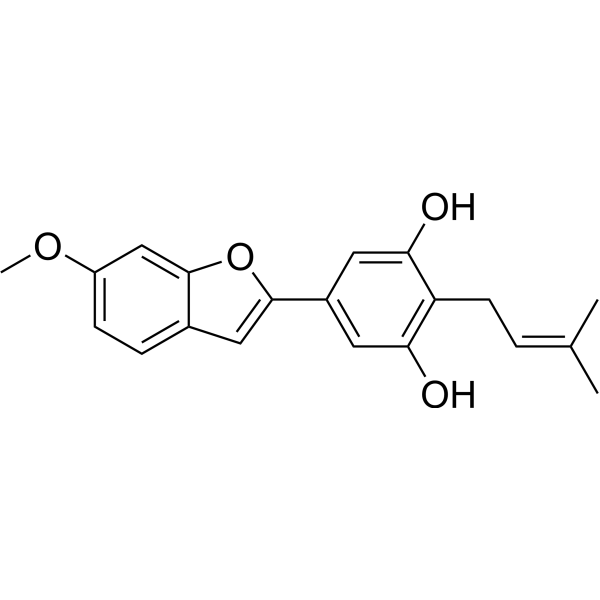
-
- HY-149981
-
|
|
P-glycoprotein
|
Cancer
|
P-gp inhibitor 13 is a P-gp inhibitor. P-gp inhibitor 13 can reverse P-glycoprotein-mediated paclitaxel resistance in A2780/T cell. P-gp inhibitor 13 can be used for the research of advanced acute myeloid leukemia .
|
-
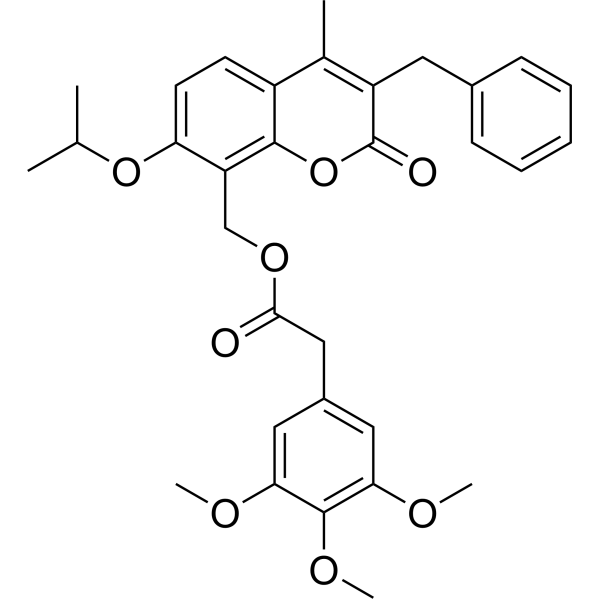
-
- HY-12496
-
NS-1619
2 Publications Verification
|
Potassium Channel
Apoptosis
|
Cardiovascular Disease
Cancer
|
|
NS-1619 is an opener of large conductance Ca 2+-activated K + (BK) channel. NS-1619 is a highly effective relaxant with an EC50 of about 10 – 30 μM in several smooth muscles of blood vessels and other tissues . NS1619 inhibits proliferation and induces apoptosis in A2780 ovarian cancer cells .
|
-
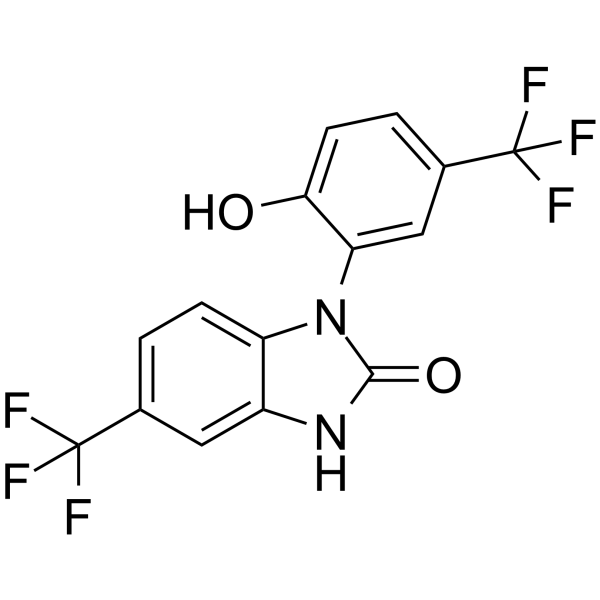
-
- HY-N10268
-
|
NSC 299113
|
Apoptosis
|
Cancer
|
|
3-Hydroxyterphenyllin is a metabolite of Aspergillus candidus.3-Hydroxyterphenyllin suppresses proliferation and causes cytotoxicity against A2780/CP70 and OVCAR-3 cells. 3-Hydroxyterphenyllin induces S phase arrest and apoptosis. 3-Hydroxyterphenyllin has the potential for the research of ovarian cancer .
|
-
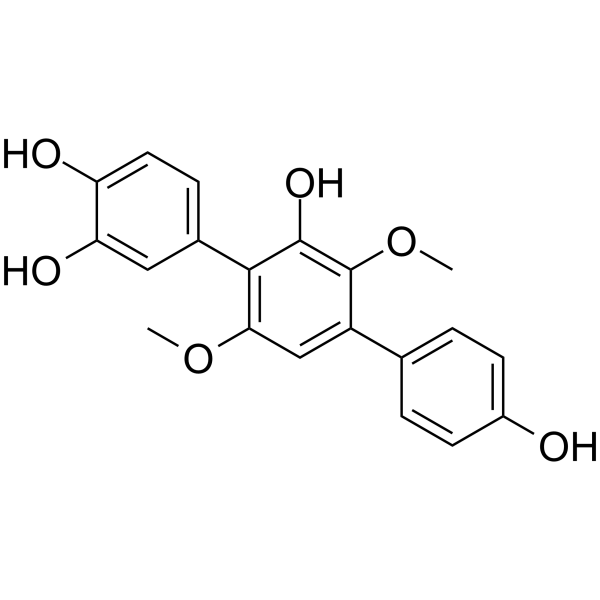
-
- HY-119694
-
|
|
Others
|
Cancer
|
|
Rotenolone is an antiproliferative agent. Rotenolone shows antiproliferative activity against the ovarian cancer A2780, breast cancer BT-549, prostate cancer DU 145, NSCLC NCI-H460, and colon cancer HCC-2998 cell lines, with IC50s of 0.95, 1.6, 2.7, 2.0, and 2.9 μM, respectively .
|
-
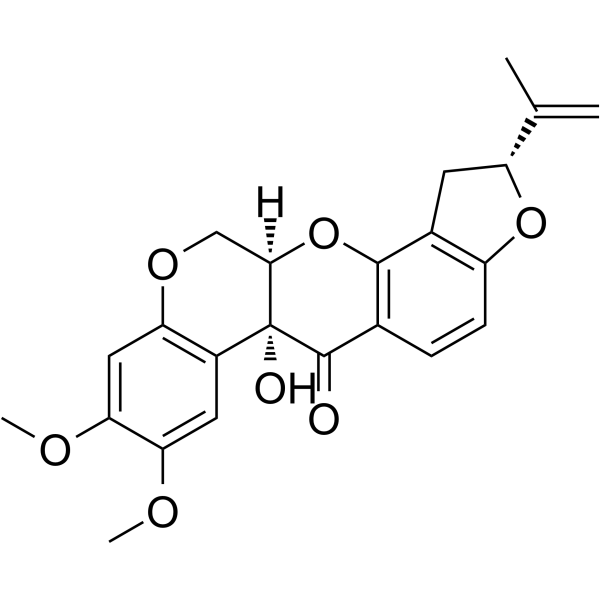
-
- HY-147656
-
|
|
NAMPT
Autophagy
|
Cancer
|
|
NAMPT degrader-1 (Compound A3) is an nicotinamide phosphoribosyltransferase (NAMPT) degrader with an IC50 of 0.023 μM. NAMPT degrader-1 significantly induces the degradation of NAMPT through the autophagy-lysosomal pathway and shows excellent cellular antitumor potency .
|
-
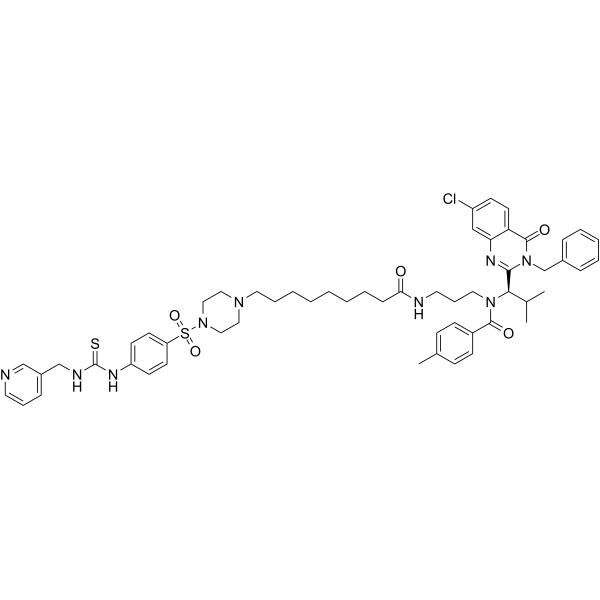
-
- HY-124348
-
|
3,5-Dimethyl PIT-1
|
PI3K
|
Cancer
|
|
DM-PIT-1 is a PIP3/PH (phosphatidylinositol-3,4,5-triphosphate/Pleckstrin) interaction inhibitor . DM-PIT-1 has the potential for the research of ovarian cancer .
|
-
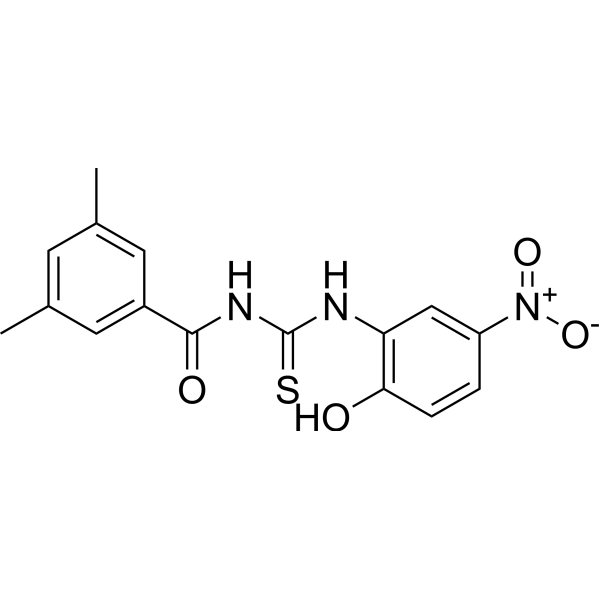
-
- HY-163270
-
|
|
Microtubule/Tubulin
|
Cancer
|
|
PM534, tubulin targeting agent, inhibits tubulin assembly with IC50 values of 0.8-3.2 nM. PM534 binds to the colchicine site of tubulin, which has high antitumor activity .
|
-
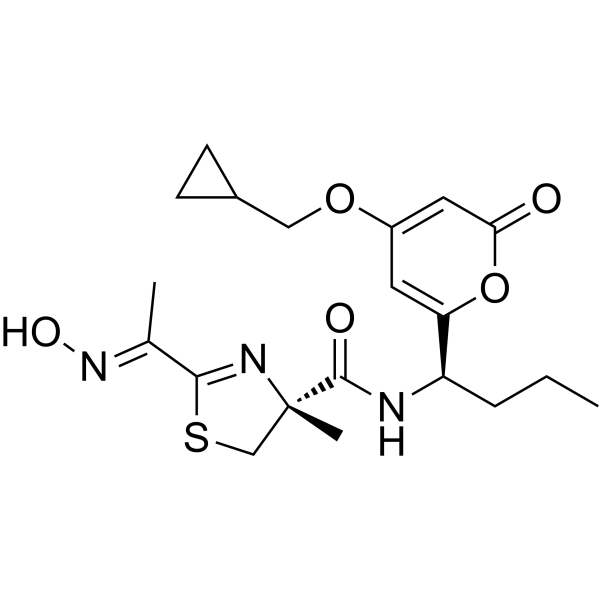
-
- HY-B0380A
-
|
|
Oct3/4
ERK
Akt
Apoptosis
|
Metabolic Disease
Cancer
|
|
Trimebutine maleate is an orally anti-tumor agent. Trimebutine maleate selectively suppresses stemness and proliferation of ovarian cancer stem cells (CSCs). Trimebutine maleate reduces the colonic muscle hypercontractility, modulates gastrointestinal motility, induces apoptosis and can be used for the research of glioma/glioblastoma and irritable bowel syndrome .
|
-
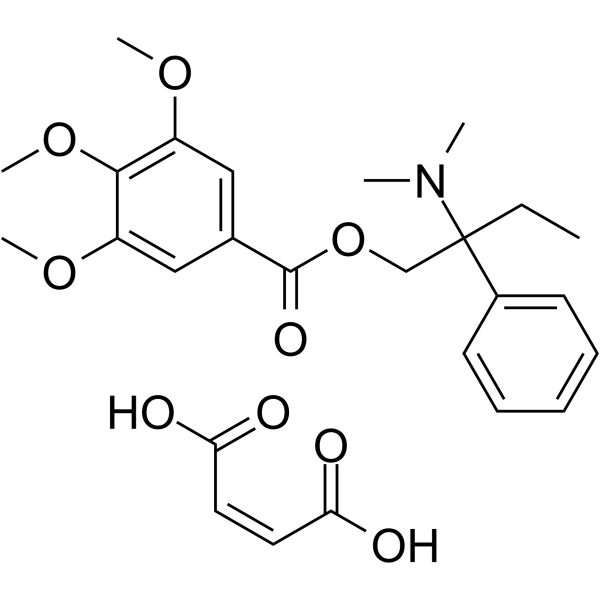
-
- HY-N0281
-
|
7,8-Dihydroxycoumarin
|
EGFR
PKA
PKC
Autophagy
Apoptosis
AMPK
Akt
mTOR
Reactive Oxygen Species
Caspase
Bcl-2 Family
PARP
Parasite
|
Inflammation/Immunology
Cancer
|
|
Daphnetin (7,8-dihydroxycoumarin), one coumarin derivative can be found in plants of the Genus Daphne, is a potent, oral active protein kinase inhibitor, with IC50s of 7.67 μM, 9.33 μM and 25.01 μM for EGFR, PKA and PKC in vitro, respectively. Daphnetin triggers ROS-induced cell apoptosis and induces cytoprotective autophagy by modulating the AMPK/Akt/mTOR pathway. Daphnetin has anti-inflammation activitity and inhibits TNF-α, IL-1ß, ROS, and MDA production. Daphnetin has schizontocidal activity against malaria parasites. Daphnetin can be used for rheumatoid arthritis , cancer and anti-malarian research .
|
-
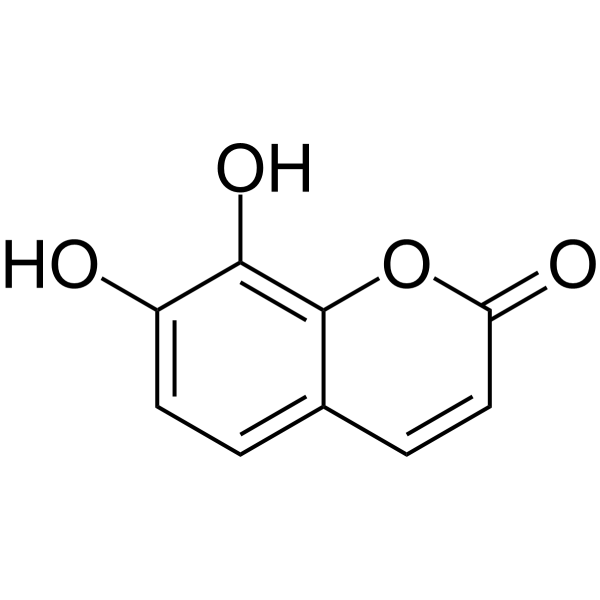
-
- HY-146029
-
|
|
Apoptosis
|
Cancer
|
|
Apoptosis inducer 3 (Compound 3) is an apoptosis inducer that selectively triggers apoptosis and late-apoptosis. Apoptosis inducer 3 shows cytotoxicity against cancer cells .
|
-
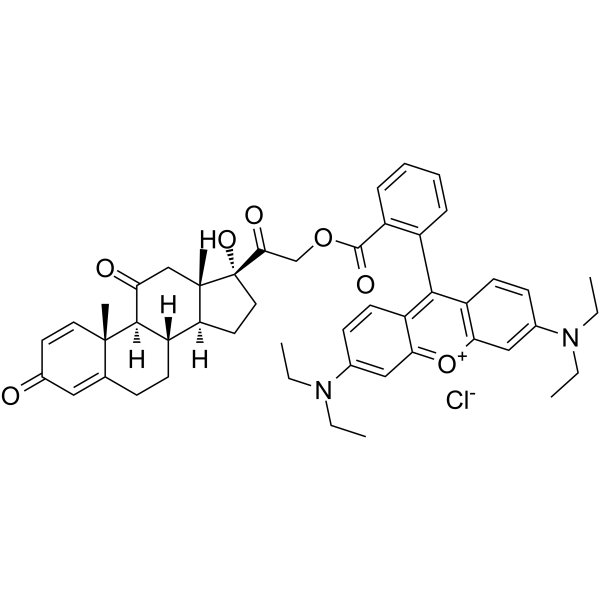
-
- HY-12003
-
|
|
Aurora Kinase
|
Cancer
|
|
SNS-314 mesylate is a potent and selective aurora kinase inhibitor with IC50s of 9, 31, and 6 nM for aurora A, B and C, respectively .
|
-
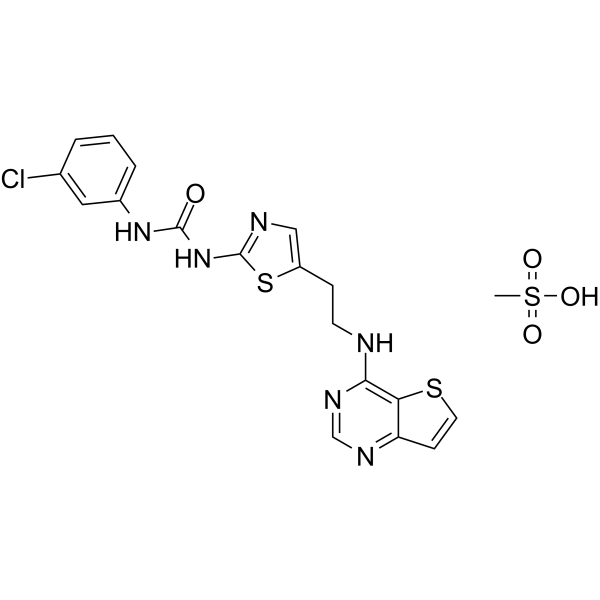
-
- HY-N3446
-
|
|
Apoptosis
|
Cancer
|
|
IVHD-valtrate, an active Valeriana jatamansi derivative, is against human ovarian cancer cells in vitro and in vivo. IVHD-valtrate induces cancer cells apoptosis and arrests the ovarian cancer cells in the G2/M phase. IVHD-valtrate has the potential to be a novel chemotherapeutic agent for the human ovarian cancer research .
|
-
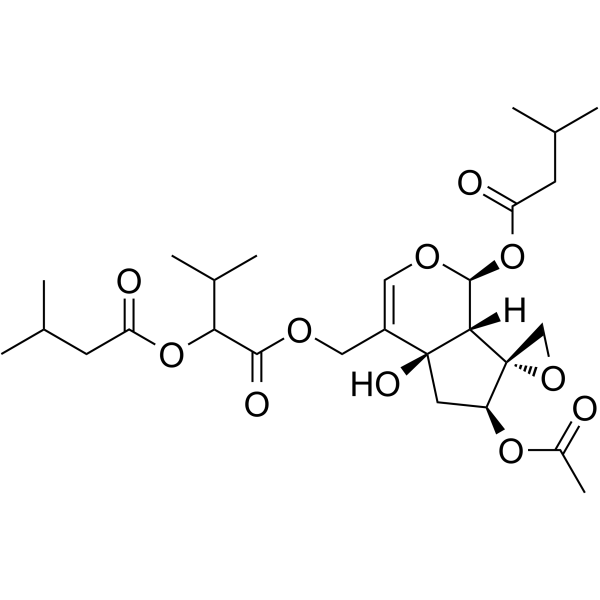
-
- HY-108344
-
|
|
Aurora Kinase
|
Cancer
|
|
SNS-314 is a potent and selective aurora kinase inhibitor with IC50s of 9, 31, and 6 nM for aurora A, B and C, respectively .
|
-
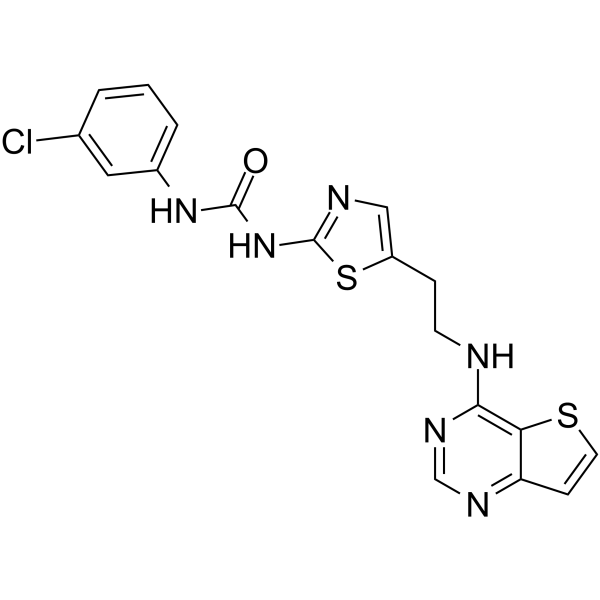
-
- HY-W013032A
-
|
Sodium oxamate
|
Lactate Dehydrogenase
Apoptosis
|
Cancer
|
|
Oxamic acid (oxamate) sodium salt is a lactate dehydrogenase-A (LDH-A) inhibitor. Oxamic acid sodium salt shows anti-tumor activity, and anti-proliferative activity against cancer cells, and can induce apoptosis .
|
-
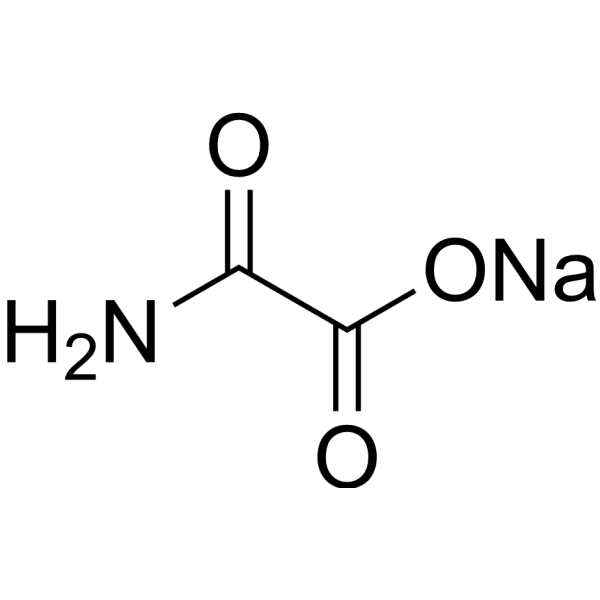
-
- HY-153917
-
|
|
Others
|
Metabolic Disease
Cancer
|
|
CRT0063465 is a Ligand of HumanPGK1andStress Sensor DJ1, with theKdof 24 μM ofPGK1. CRT0063465 modulates the shelterin complex composition
and telomere Length .
|
-
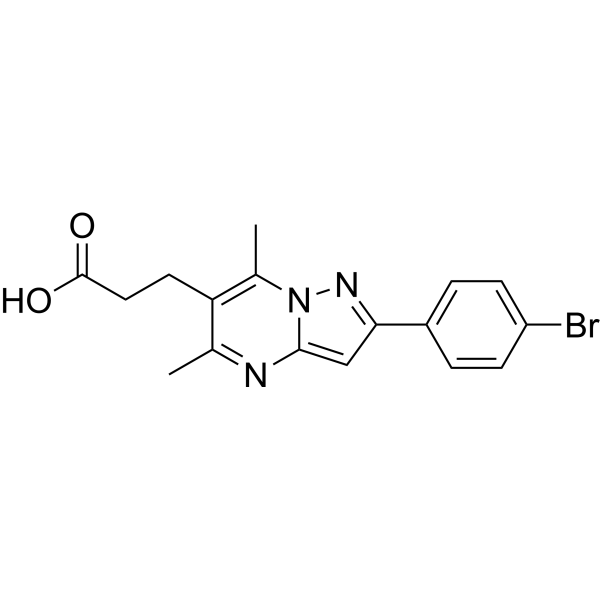
-
- HY-P2228
-
|
|
HDAC
Apoptosis
|
Cancer
|
|
Chlamydocin, a fungal metabolite, is a highly potent HDAC inhibitor, with an IC50 of 1.3 nM. Chlamydocin exhibits potent antiproliferative and anticancer activities. Chlamydocin induces apoptosis by activating caspase-3 .
|
-
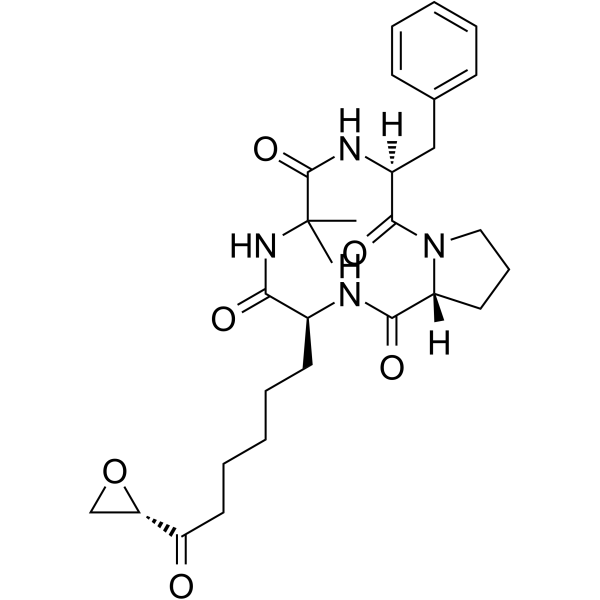
-
- HY-145394
-
|
|
CDK
|
Cancer
|
|
CDK7-IN-6 is a potent and selective cyclin-dependent kinase (CDK7) inhibitor (IC50≤100 nM), extracted from patent WO2019197549 A1, compound 210. CDK7-IN-6 is > 200-fold selective for CDK7 over CDK1, CDK2, and CDK5. CDK7-IN-6 can be used for the research of cancer .
|
-
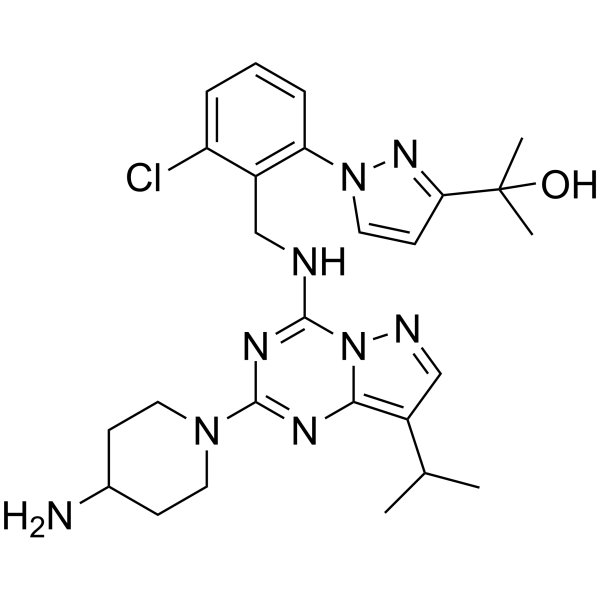
-
- HY-50672
-
|
|
Kinesin
Apoptosis
Lipoxygenase
|
Cancer
|
|
MK-0731 is a selective, non-competitive and allosteric kinesin spindle protein (KSP) inhibitor with an IC50 of 2.2 nM and a pKa of 7.6. MK-0731 is >20,000 fold selectivity against other kinesins. MK-0731 induces mitotic arrest and induces apoptosis in tumors. MK-0731 provides significant antitumor efficacy .
|
-

-
- HY-14833
-
|
TP300
|
Topoisomerase
|
Cancer
|
|
Atiratecan (TP300) is a proagent of camptothecin analog CH0793076 (HY-107096). Atiratecan does not inhibit acetylcholinesterase (AChE) activities. Atiratecan shows antitumor activity against both breast cancer resistance protein (BCRP)-positive and -negative xenografts in mouse xenograft models .
|
-
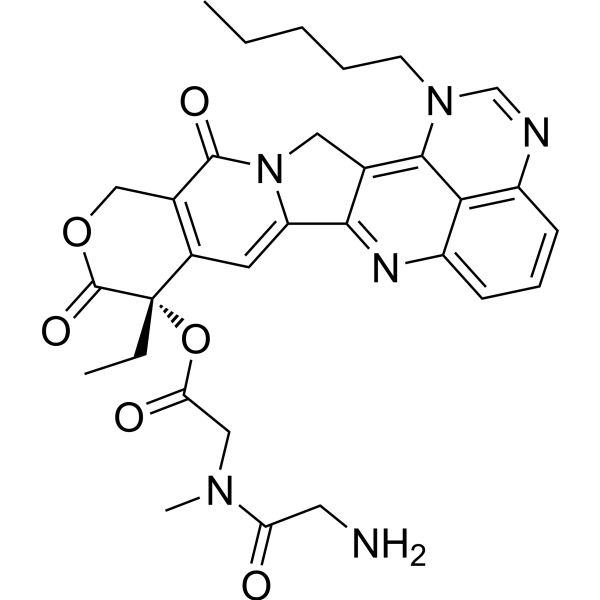
-
- HY-138293
-
SY-5609
1 Publications Verification
CDK7-IN-3
|
CDK
Apoptosis
|
Cancer
|
|
SY-5609 (CDK7-IN-3) is an orally active, highly selective, noncovalent CDK7 inhibitor with a KD of 0.065 nM. SY-5609 shows poor inhibition on CDK2 (Ki=2600 nM), CDK9 (Ki=960 nM), CDK12 (Ki=870 nM). SY-5609 induces apoptosis in tumor cells and has antitumor activity .
|
-
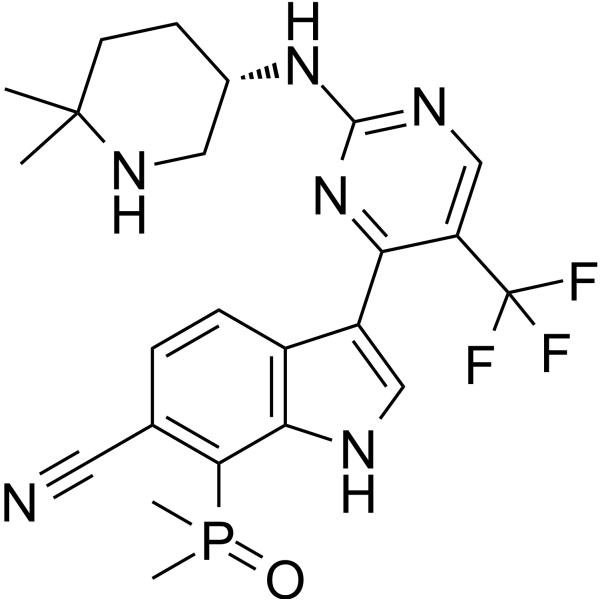
-
- HY-139150
-
|
|
Histone Methyltransferase
|
Cancer
|
|
EZH2-IN-4 is an orally active, potent EZH2 inhibitor with IC50s of 0.923 nM and 2.65 nM against wild type (WT) 5-membered (5-mer) EZH2 and mutant 5-mer EZH2, respectively. EZH2-IN-4 has anti-cancer activity .
|
-
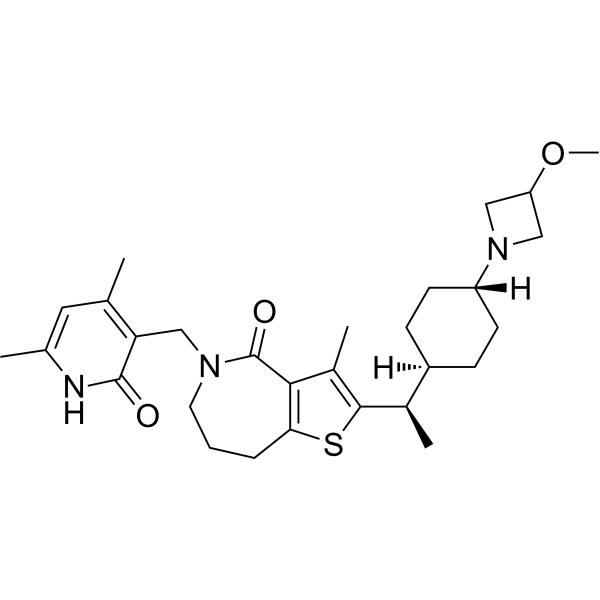
-
- HY-145402
-
|
|
CDK
|
Cancer
|
|
CDK7-IN-7 is a potent and selective CDK7 kinase inhibitor with an IC50 of <50 nM (Patent CN112661745A, compound T-01) .
|
-

-
- HY-109583
-
|
4-Oxo-4-HPR
|
Apoptosis
Reactive Oxygen Species
Drug Metabolite
|
Cancer
|
|
4-Oxofenretinide (4-Oxo-4-HPR) is a metabolite of Fenretinide (HY-15373). 4-Oxofenretinide induces cell growth inhibition in ovarian, breast, and neuroblastoma tumor cell lines. 4-Oxofenretinide causes a marked accumulation of cells in G2-M. 4-Oxofenretinide induces cancer cell apoptosis through caspase-9 .
|
-
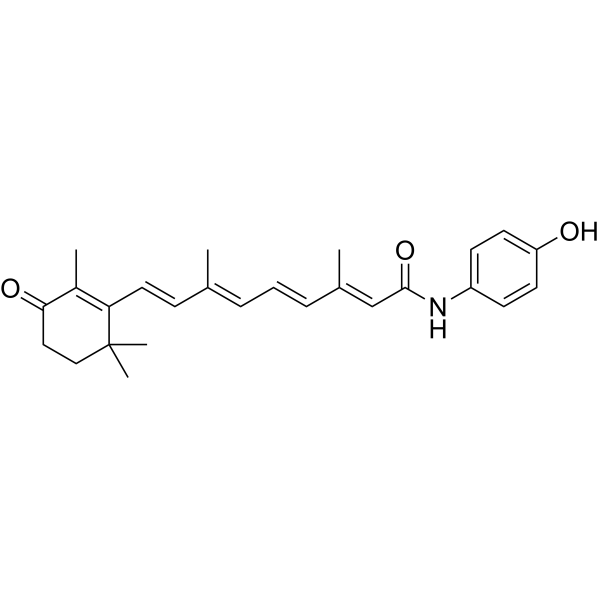
-
- HY-15275
-
|
|
CDK
Angiotensin-converting Enzyme (ACE)
|
Infection
Cancer
|
|
BMS-265246 is a potent and selective cyclin-dependent kinase CDK1 and CDK2 inhibitor, with IC50 values of 6 and 9 nM, respectively. BMS-265246 inhibits CHI3L1 (chitinase 3-like-1) stimulation of ACE2 (angiotensin converting enzyme 2) and SPP (viral spike protein priming proteases). BMS-265246 can be used for ovarian cancer and COVID-19 research .
|
-
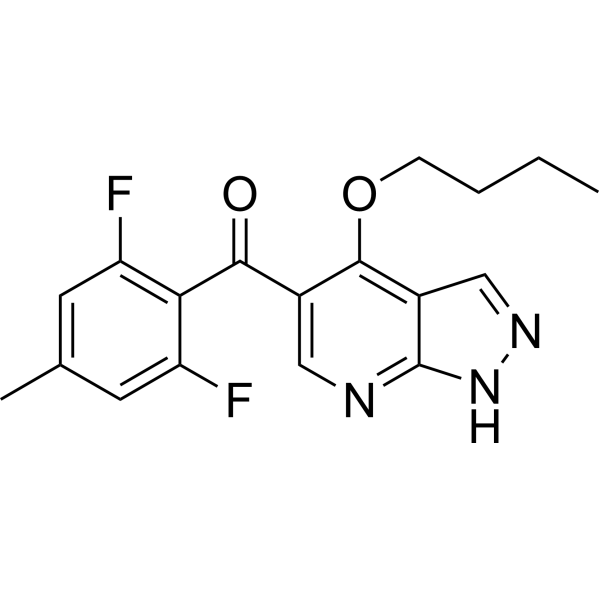
-
- HY-10626
-
T0901317
Maximum Cited Publications
22 Publications Verification
|
LXR
FXR
ROR
Apoptosis
|
Cardiovascular Disease
Metabolic Disease
Cancer
|
|
T0901317 is an orally active and highly selective LXR agonist with an EC50 of 20 nM for LXRα . T0901317 activates FXR with an EC50 of 5 μM . T0901317 is RORα and RORγ dual inverse agonist with Ki values of 132 nM and 51 nM, respectively . T0901317 induces apoptosis and inhibits the development of atherosclerosis in low-density lipoprotein (LDL) receptor-deficient mice .
|
-
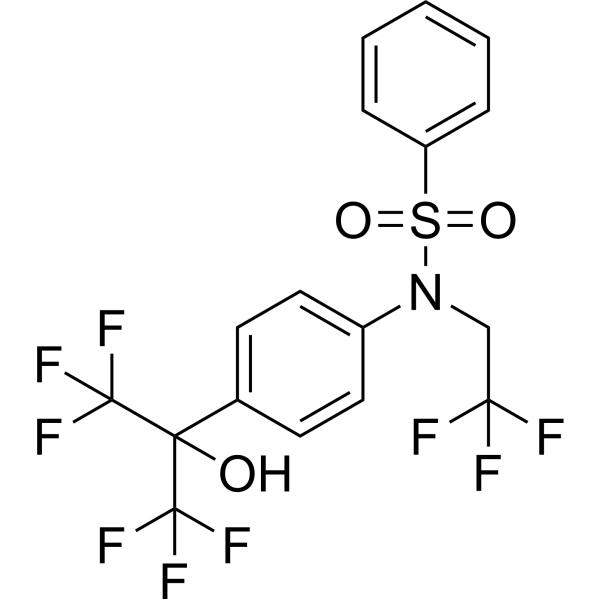
-
- HY-15995
-
|
TubA
|
ADC Cytotoxin
Antibiotic
Microtubule/Tubulin
|
Cancer
|
|
Tubulysin A (TubA) is an anticancer and antiangiogenic agent with anti-microtubule, anti-mitosis and anti-proliferative activity against a variety of cancer cells with IC50 values in the pmol range. It can induce apoptosis of cancer cells and has no effect on normal cells. Tubulysins are a group of potent cytotoxins consisting of nine members (A-I). Tubulysin A can synthesize ADC as ADC Cytotoxin< b>ADC Cytotoxin .
|
-
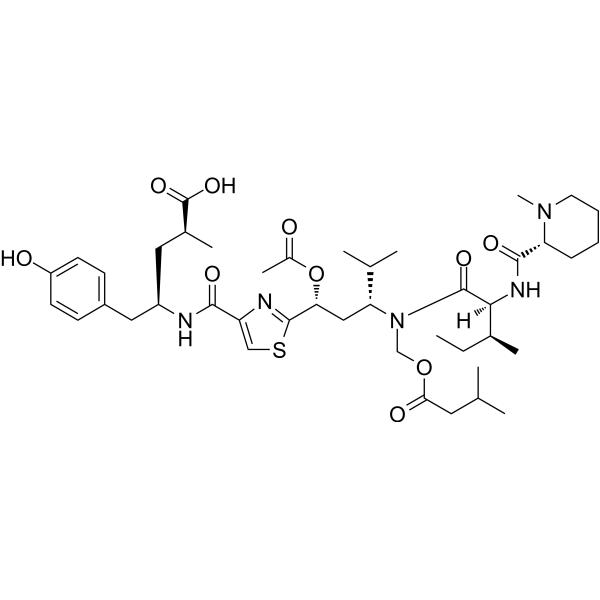
-
- HY-138097
-
α-NETA
5 Publications Verification
|
Chemerin Receptor
Aldehyde Dehydrogenase (ALDH)
Cholinesterase (ChE)
Apoptosis
|
Cancer
|
|
α-NETA is a potent and noncompetitive choline acetyltransferase (ChA) inhibitor with an IC50 of 9 μM. α-NETA is a potent ALDH1A1 (IC50=0.04 µM) and chemokine-like receptor-1 (CMKLR1) antagonist. α-NETA weakly inhibits cholinesterase (ChE; IC50=84 µM) and acetylcholinesterase (AChE; IC50=300 µM). α-NETA has anti-cancer activity .
|
-
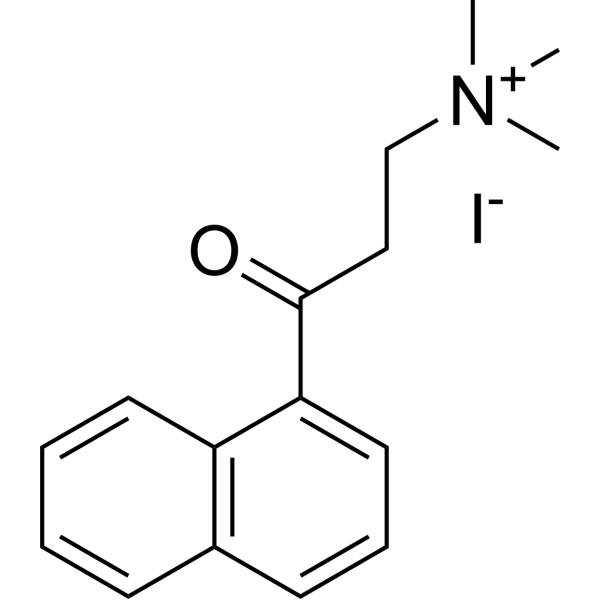
-
- HY-N0214
-
-
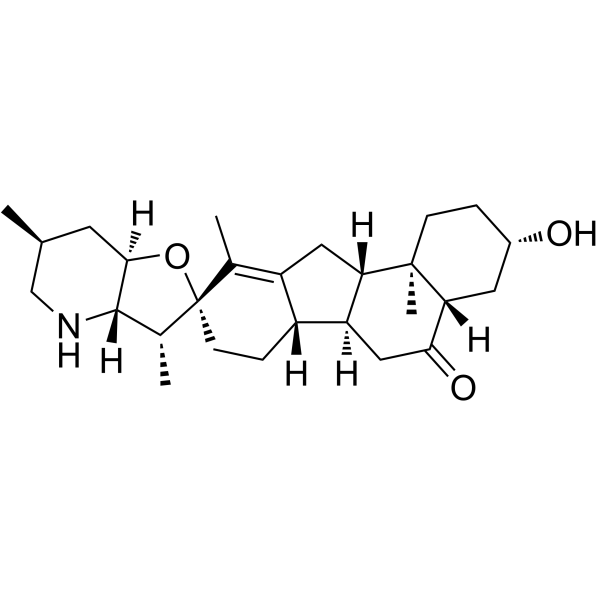
-
- HY-N0214A
-
-
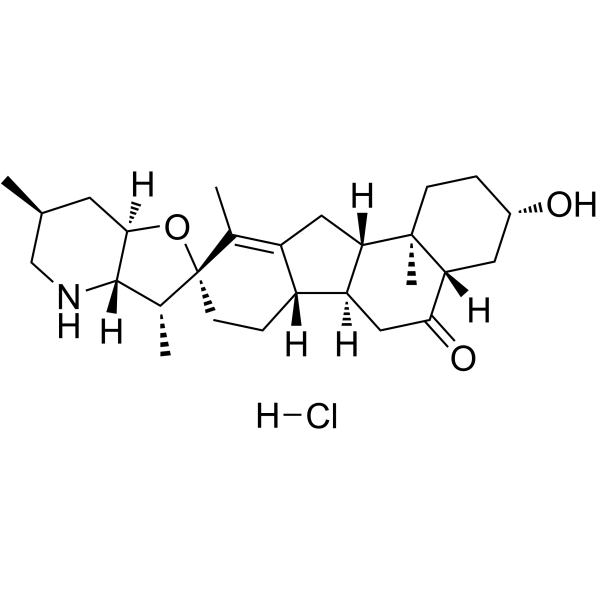
-
- HY-147409
-
|
|
CDK
|
Cancer
|
|
Ulecaciclib is an orally activitive inhibitor of cyclin-dependent kinase (CDK), with Ki values of 0.62 μM (CDK2/Cyclin A), 0.2 nM (CDK4/Cyclin D1), 3 nM (CDK6/Cyclin D3), and 0.63 μM (CDK7/Cyclin H), respectively. Ulecaciclib can cross blood brain barrier and has good pharmacokinetic characteristics .
|
-
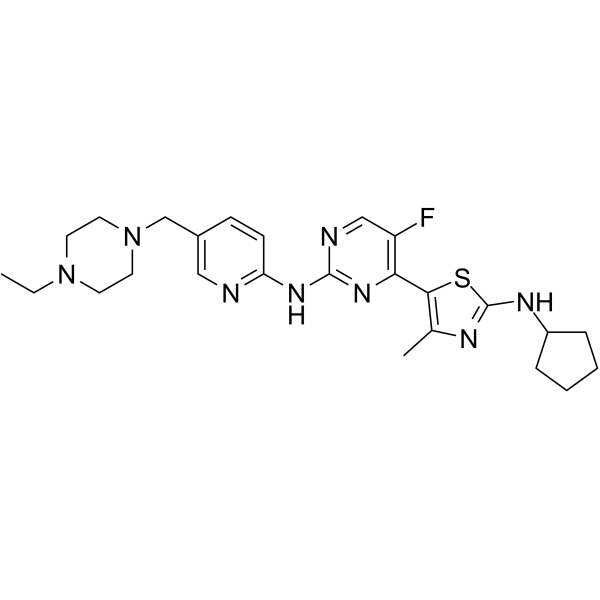
| Cat. No. |
Product Name |
Target |
Research Area |
-
- HY-P2228
-
|
|
HDAC
Apoptosis
|
Cancer
|
|
Chlamydocin, a fungal metabolite, is a highly potent HDAC inhibitor, with an IC50 of 1.3 nM. Chlamydocin exhibits potent antiproliferative and anticancer activities. Chlamydocin induces apoptosis by activating caspase-3 .
|
| Cat. No. |
Product Name |
Target |
Research Area |
-
- HY-P99925
-
|
REGN421
|
Notch
|
Metabolic Disease
Cancer
|
|
Enoticumab (REGN421, SAR153192) is an IgG1κ antibody targeting human Dll4. DLL4 is a ligand of the Notch signaling pathway and regulates fatty acid uptake through non-transcriptional regulation of macropinocytosis-dependent long-chain fatty acid uptake. Specific in vivo activity of Enoticumab in an ovarian xenograft model. EGN421 (2.5 mg/kg once weekly) resulted in 86% and 83% tumor growth inhibition in mouse subcutaneous TOV-112D or intraperitoneal A2780 human tumor xenograft models, respectively .
|
| Cat. No. |
Product Name |
Category |
Target |
Chemical Structure |
-
- HY-N10846
-
-

-
- HY-N9892
-
-

-
- HY-N2863
-
-

-
- HY-N7825
-
-

-
- HY-N9067
-
-

-
- HY-N10268
-
-

-
- HY-N0281
-
|
7,8-Dihydroxycoumarin
|
Classification of Application Fields
Daphne
Thymelaeaceae
Source classification
Coumarins
Phenols
Polyphenols
Phenylpropanoids
Plants
Disease Research Fields
Cancer
|
EGFR
PKA
PKC
Autophagy
Apoptosis
AMPK
Akt
mTOR
Reactive Oxygen Species
Caspase
Bcl-2 Family
PARP
Parasite
|
|
Daphnetin (7,8-dihydroxycoumarin), one coumarin derivative can be found in plants of the Genus Daphne, is a potent, oral active protein kinase inhibitor, with IC50s of 7.67 μM, 9.33 μM and 25.01 μM for EGFR, PKA and PKC in vitro, respectively. Daphnetin triggers ROS-induced cell apoptosis and induces cytoprotective autophagy by modulating the AMPK/Akt/mTOR pathway. Daphnetin has anti-inflammation activitity and inhibits TNF-α, IL-1ß, ROS, and MDA production. Daphnetin has schizontocidal activity against malaria parasites. Daphnetin can be used for rheumatoid arthritis , cancer and anti-malarian research .
|
-

-
- HY-N3446
-
-

-
- HY-N0214
-
-

-
- HY-N0214A
-
-

| Cat. No. |
Product Name |
|
Classification |
-
- HY-157411
-
|
|
|
Alkynes
|
|
anti-TNBC agent-5 (compound 10C) is a triple-negative breast cancer (TNBC) inhibitor with good stability and pharmacokinetic properties. anti-TNBC agent-5 exhibits antiproliferative activity against a variety of cancer cells. anti-TNBC agent-5 can also effectively inhibit TNBC lung metastasis activity in the MDA-MB-231 xenograft model. anti-TNBC agent-5 can be used in cancer research .
|
Your information is safe with us. * Required Fields.
Inquiry Information
- Product Name:
- Cat. No.:
- Quantity:
- MCE Japan Authorized Agent:






















































